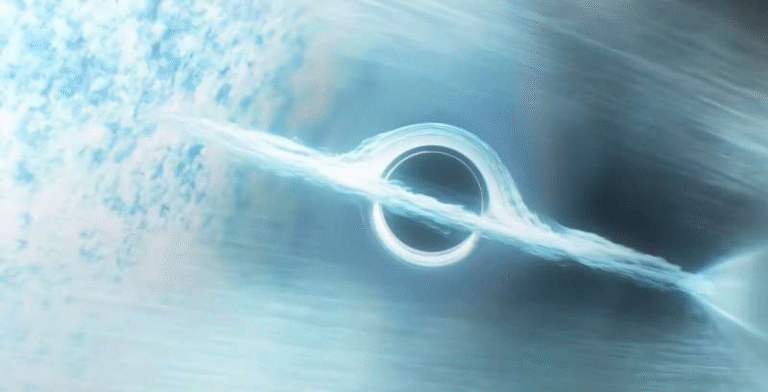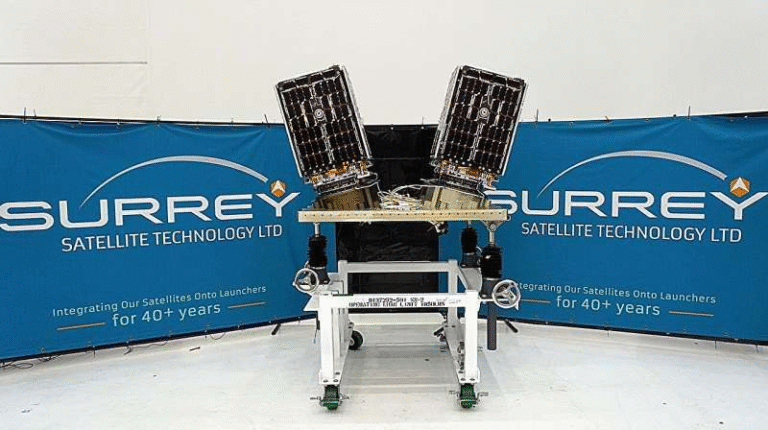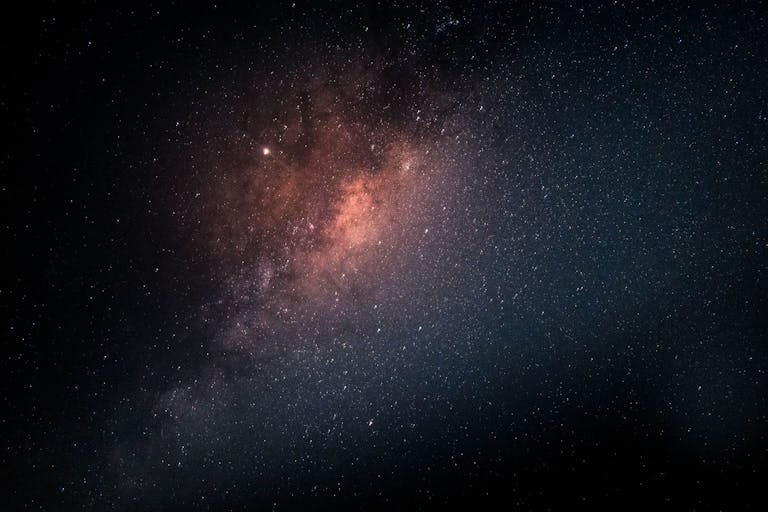Rogue Planet Cha 1107-7626 Is Growing at a Record-Breaking Rate — The Fastest Ever Observed in the Universe

Astronomers have made an extraordinary discovery: a free-floating planet called Cha 1107-7626 is feeding on gas and dust faster than any other world ever recorded. Located about 620 light-years away in the Chamaeleon I star-forming region, this lonely planet is not orbiting a star, yet it’s undergoing an intense burst of growth, devouring roughly six billion tonnes of material every second.
That’s not a typo. Six billion tonnes every second — a feeding frenzy that challenges how scientists understand planetary formation.
The Fastest Planetary Growth Ever Recorded
Using the European Southern Observatory’s Very Large Telescope (VLT) in Chile, researchers led by Víctor Almendros-Abad from Italy’s National Institute for Astrophysics (INAF) observed an enormous accretion burst around Cha 1107-7626. The planet, estimated to be 5 to 10 times more massive than Jupiter, is still forming, surrounded by a swirling disk of gas and dust — the raw material from which planets grow.
In early 2025, the planet appeared relatively quiet. But by mid-year, something extraordinary happened: its feeding rate suddenly spiked by a factor of 6 to 8, reaching the highest ever measured for a planet or a planet-like object. At that point, it was absorbing around 10⁻⁷ Jupiter masses per year, which translates to the now-famous six billion tonnes per second figure.
This outburst wasn’t fleeting — the observations show it lasted at least two months, and it may still have been continuing when the observation period ended. Archival data from 2016 even hint at an earlier outburst, suggesting that Cha 1107-7626 may experience repeated feeding bursts, much like some young stars do.
The results, published in The Astrophysical Journal Letters, represent the strongest and fastest accretion episode ever recorded for a planetary-mass object.
What Is a Rogue Planet?
To understand why this discovery is so special, it helps to know what a rogue planet is. Unlike planets in our solar system, which orbit stars, rogue planets drift freely through space. They either form on their own from collapsing clouds of gas and dust — like stars — or are ejected from their original planetary systems by gravitational interactions.
These isolated worlds are incredibly hard to detect. Without a parent star to illuminate them, they emit only faint infrared light from residual heat. Most of what we know about them comes from gravitational microlensing (where a rogue planet passes in front of a background star and bends its light) or direct imaging of particularly young, hot examples like Cha 1107-7626.
Because they are rare and faint, any detailed observation of a rogue planet provides a precious opportunity to study how such bodies form and evolve.
Signs of a Violent Feeding Frenzy
When the research team compared observations before and during the accretion burst, they found dramatic differences in the planet’s light spectrum and brightness.
During the outburst:
- The H-alpha emission line — a spectral fingerprint of hydrogen — became double-peaked with redshifted absorption, a hallmark of magnetospheric accretion. This process, where material spirals along magnetic field lines onto the planet’s surface, is normally seen in young stars, not planets.
- The planet’s visible brightness increased three- to sixfold, corresponding to a rise of 1.5 to 2 magnitudes in the optical band.
- In the infrared, the planet brightened by around 10–20%, and new molecular features appeared, including water vapor that hadn’t been seen before.
- The chemical composition of the disk shifted during the burst. Hydrocarbon signatures (such as methane and ethylene) became more pronounced, suggesting that the heating caused by accretion changed the chemistry of the surrounding material.
These findings suggest that magnetic fields — long thought to be important only in star formation — are also active in shaping the evolution of very low-mass objects like Cha 1107-7626. In essence, this rogue planet is behaving like a miniature star, pulling in gas through magnetically controlled funnels.
A Planet That Acts Like a Star
This behavior blurs the traditional line between stars, brown dwarfs, and planets. Stars form when massive clouds of gas collapse under gravity, heating up and igniting nuclear fusion. Planets, by contrast, are believed to form gradually from leftover material in disks around young stars.
But Cha 1107-7626 — a free-floating object that is still accreting matter directly from its own disk — doesn’t fit neatly into either category. Its activity looks remarkably similar to the outbursts observed in young stellar objects, known as EXor events, where accretion temporarily increases by several orders of magnitude.
This discovery raises a fundamental question: Are some rogue planets actually failed stars? Or do they form just like normal planets but get ejected into interstellar space early in their lives?
The evidence here leans toward the star-like formation scenario. The powerful accretion bursts, strong magnetic fields, and disk chemistry all suggest that Cha 1107-7626 likely formed independently, not as an expelled planet from a star system.
The Instruments Behind the Discovery
The study relied primarily on the X-shooter spectrograph on ESO’s Very Large Telescope (VLT) in Chile’s Atacama Desert — one of the most advanced ground-based observatories in the world.
The team also used data from the James Webb Space Telescope (JWST), combining its infrared sensitivity with older observations from SINFONI, another VLT instrument. Together, these datasets allowed astronomers to monitor how the planet’s emission changed over time and across different wavelengths.
This multi-instrument approach provided a comprehensive view of both the hot inner disk and the cooler outer material, confirming that the surge in brightness and accretion was genuine and not a transient flare.
What This Means for Planet Formation
For decades, scientists have debated how free-floating planets originate. Two leading theories exist:
- Ejection theory — Planets form in normal star systems and are later kicked out due to gravitational interactions or collisions.
- Star-like formation theory — Small fragments of molecular clouds collapse on their own, forming low-mass objects without ever orbiting a star.
The new evidence from Cha 1107-7626 strongly supports the second idea. The planet’s disk, magnetic accretion, and episodic bursts resemble the processes observed in young brown dwarfs and protostars, not in gas giants expelled from mature systems.
This means that rogue planets may not all share the same origin. Some may be exiles, but others might be born wild, forming in isolation the same way stars do — only with less material to work with.
How Common Are Rogue Planets?
Astronomers estimate that there could be billions of rogue planets drifting through our galaxy. A 2021 study using the MOA (Microlensing Observations in Astrophysics) survey suggested there might be as many as two rogue planets for every star in the Milky Way.
Most of them are impossible to see directly because they are cold, dark, and far away. But young ones, like Cha 1107-7626, still glow faintly in infrared light, making them easier to detect with powerful telescopes.
The upcoming Extremely Large Telescope (ELT) — another ESO project expected to become the world’s biggest optical telescope — could revolutionize the study of these cosmic nomads. With its enormous 39-meter mirror, the ELT will be able to find and analyze many more rogue planets, perhaps even detecting their weather patterns or magnetic fields directly.
The Chemistry of a Forming Planet
One particularly fascinating part of this discovery lies in the changing chemistry of Cha 1107-7626’s disk. Before the burst, the disk’s infrared spectrum showed simple molecules, but during the outburst, new emission lines appeared, including water vapor — the first time this has been detected around a planetary-mass object during accretion.
This means the outburst not only increased brightness but also heated the disk enough to alter its molecular structure. Such bursts could influence what kinds of materials end up in any moons or smaller bodies that might eventually form around these objects.
For example, repeated bursts might melt icy grains, trigger new reactions, or redistribute organic molecules. Over millions of years, that could shape the composition of any satellites or rings that emerge.
Why It Matters
Cha 1107-7626 is more than just an oddball in the cosmic wilderness — it’s a missing link between stars and planets. By showing that a planetary-mass object can experience the same kind of magnetically driven accretion bursts seen in young stars, astronomers now have concrete evidence that the processes forming stars and some rogue planets are deeply connected.
It also opens the door to rethinking the definition of a “planet.” If something five to ten times the mass of Jupiter can form in isolation and feed like a star, is it still a planet — or a sub-brown dwarf? The answer may depend less on size and more on how it was born.
The Road Ahead
Future observations will focus on whether Cha 1107-7626’s accretion bursts repeat over time, what triggers them, and how its surrounding disk evolves afterward. Continuous monitoring by instruments like the VLT, JWST, and, later, the ELT will help astronomers determine whether this is a common phase for free-floating planets or a rare cosmic event.
If multiple rogue planets exhibit similar behavior, that would confirm that planetary-mass objects can undergo active, star-like growth long after separating from any potential host system.
Either way, the discovery of Cha 1107-7626’s record-breaking feeding frenzy marks a turning point in our understanding of how worlds — even the loneliest ones — come into being.
Research Reference:
“Discovery of an Accretion Burst in a Free-Floating Planetary-Mass Object” — Almendros-Abad et al., The Astrophysical Journal Letters, 2025





